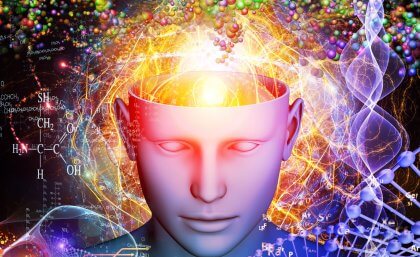A misunderstanding of how the certain parts of the brain function has hampered the creation of pharmaceuticals to effectively address fear and anxiety disorders, a pair of researchers has concluded. Their analysis, which appears in the latest issue of the American Journal of Psychiatry, also offers new insights into neurological processes, with the aim of overcoming existing barriers to drug development.
“Progress has stalled in treatment development for mental disorders,” write Joseph LeDoux, a professor in New York University’s Center for Neural Science, and Daniel Pine, who leads the Section on Development and Affective Neuroscience at the National Institute of Mental Health’s Intramural Research Program. “Promising new treatments either have not turned out to be useful when tested with patients or exhibit potential adverse effects that limit their applicability to severe disorders. We argue that this state of affairs reflects how fear and anxiety have been conceived, and we offer a new framework to address the problem.”
They observe that it has long been assumed advances in neuroscience would revolutionize treatment of psychiatric disorders. They note, for instance, that discoveries about how the brain detects and responds to threats has guided research aimed at improving treatments for disorders that involve alerted threat processing, especially fear and anxiety disorders.
However, they add, a misunderstanding of how the brain is wired with regard to both fear and anxiety has stymied the development of effective treatments. In short, these efforts have assumed that emotions such as fear give rise to both the experience of “fear” (the feeling of being afraid of being harmed) and to behavioral and physiological symptoms that also occur.
LeDoux and Pine posit that, contrary to existing views, the brain circuits that underlie conscious feelings are different from those that underlie behavioral and physiological responses. While both sets of symptoms–the conscious and the behavioral/psychological–must be understood and treated, they must be addressed differently.
“Failure to recognize this difference has impeded understanding of fear and anxiety and their treatment,” they argue. “Going forward, recognition of this distinction should provide a more productive path for research and treatment.”
LeDoux and Pine put forth a framework aimed at creating such a route–one that theorizes there are differences between process that give rise to conscious feelings of fear or anxiety and the non-conscious processes that generate behavior and physiological responses that often occur with these feelings.
This two-track nature, the authors continue, means that treatment must then move to a dual approach.
“Behavioral and physiological symptoms may be treatable with either medications or certain psychotherapies, such as cognitive behavior therapy,” they note, “while conscious feelings may have to be addressed with psychotherapeutic treatments that are specifically designed to change these.”
Human research is essential for understanding conscious feelings in the brain, LeDoux and Pine continue, while animal research is important for understanding the brain mechanisms that underlie the non-conscious processes that control behavioral and physiological responses.
“Our ability to understand the brain is only as good as our understanding of the psychological processes involved,” they conclude. “If we have misunderstood what fear and anxiety are, it is not surprising that efforts to use research based on this misunderstanding to treat problems with fear and anxiety would have produced disappointing results.”


